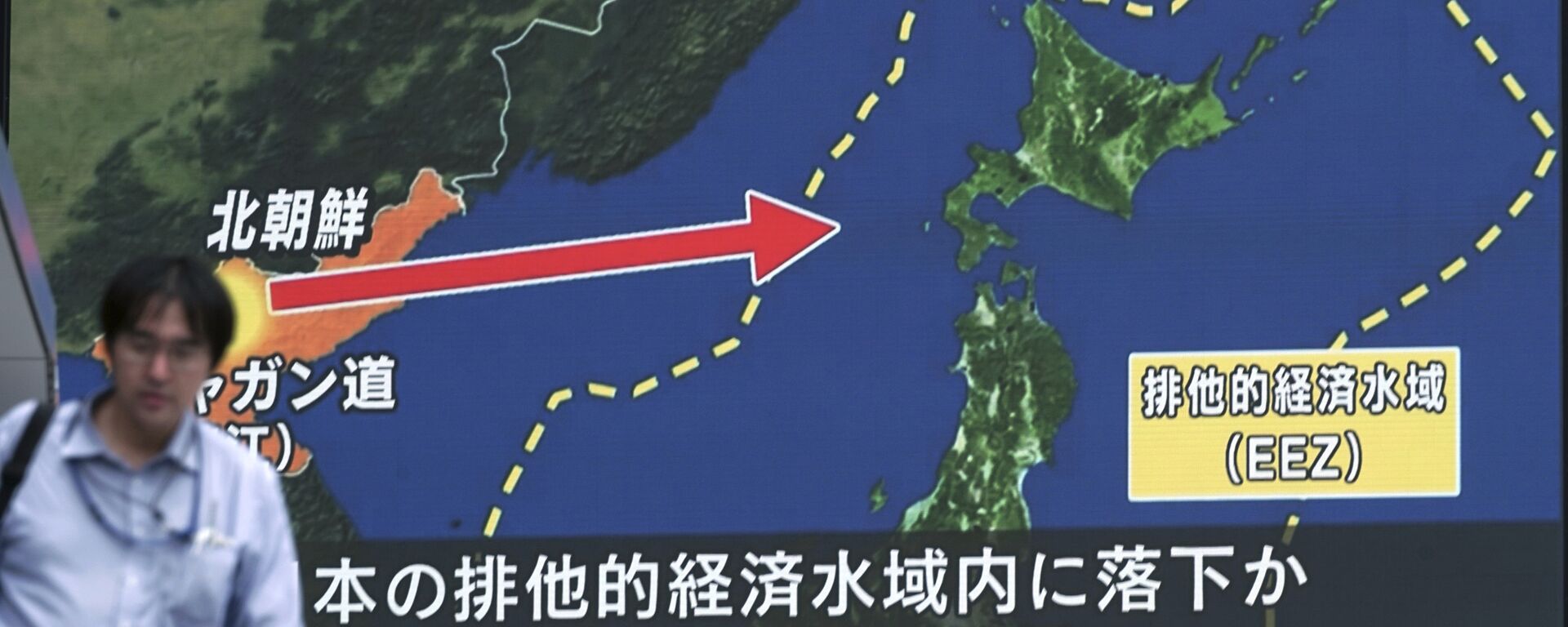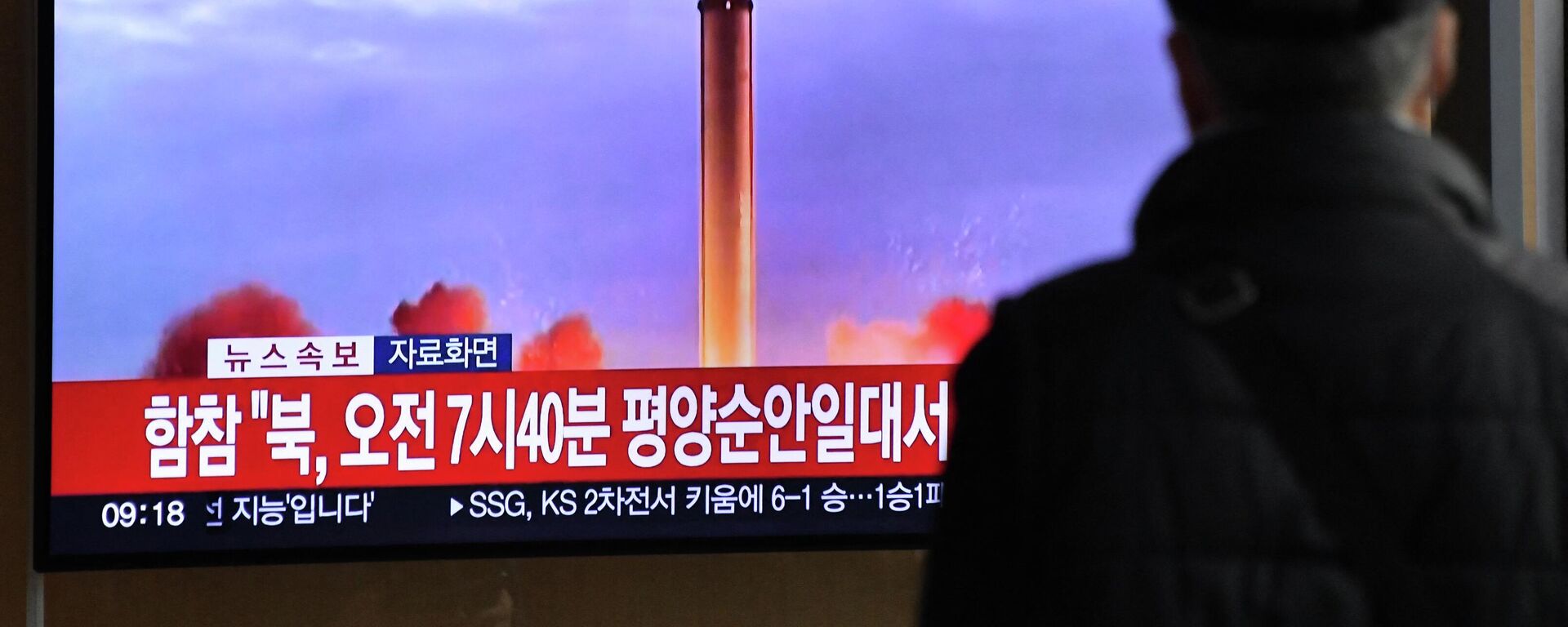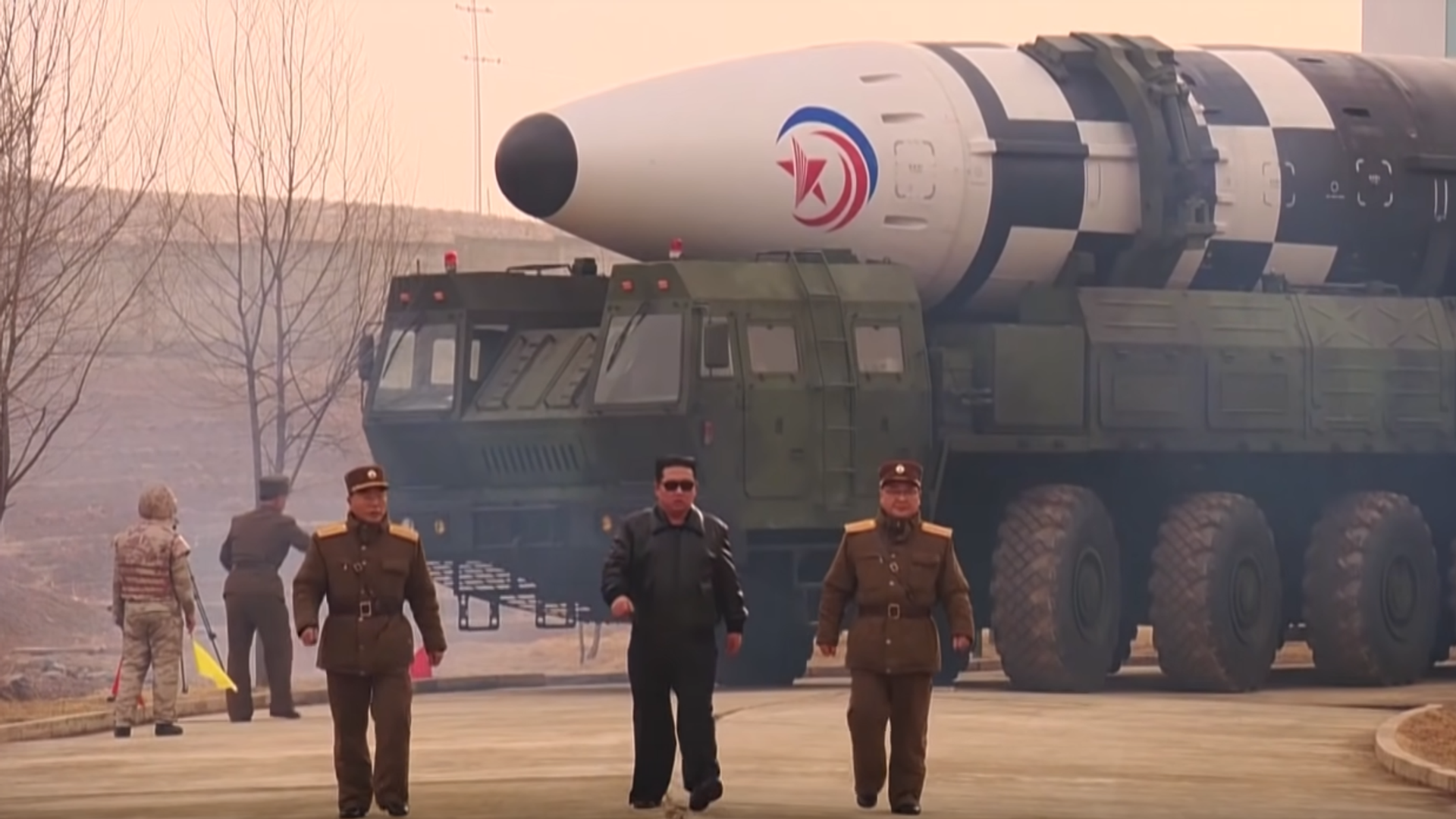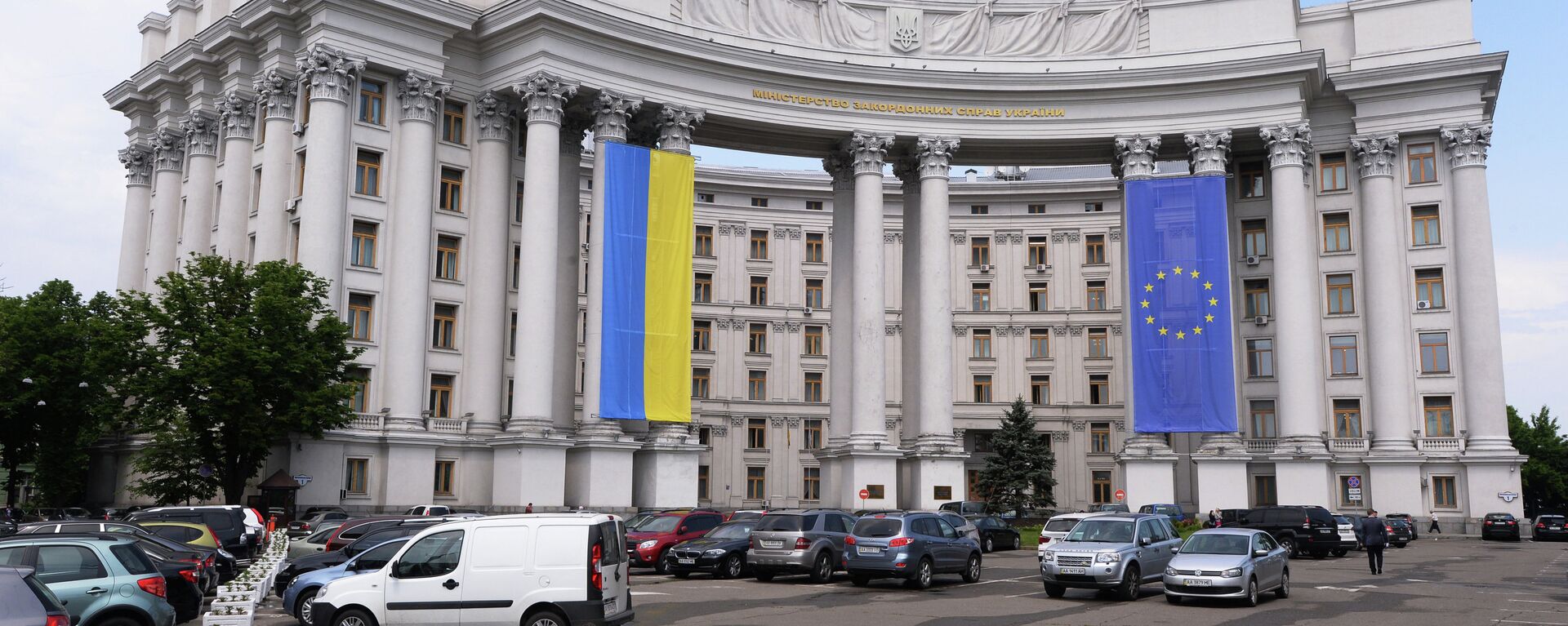https://sputnikglobe.com/20221118/why-does-north-korea-test-ballistic-missiles-and-how-big-a-threat-do-they-pose-to-the-us-1104408541.html
Why Does North Korea Test Ballistic Missiles and How Big a Threat Do They Pose to the US?
Why Does North Korea Test Ballistic Missiles and How Big a Threat Do They Pose to the US?
Sputnik International
The Democratic People’s Republic of Korea has dramatically ramped up its missile testing in recent weeks. Why is Pyongyang conducting these tests? The short answer is: to make sure they work, and respond to US provocations.
2022-11-18T17:42+0000
2022-11-18T17:42+0000
2023-09-18T13:36+0000
military
missile
nuclear
north korean nukes
north korean missile
north korean military program
north korean nuclear program
north korean armed forces
missile test
ballistic missile test
https://cdn1.img.sputnikglobe.com/img/07e6/09/09/1100601286_71:0:1308:696_1920x0_80_0_0_47f840886fa6b1a47b625eef0e1c9f4b.png
What are Ballistic Missiles?Ballistic missiles are a type of weapon which uses a rocket or rockets to propel them into the atmosphere, after which their payloads eject from the rocket’s stages and glide back down to Earth onto targets along an arc trajectory. The largest ballistic missiles, such as ICBMs, take advantage of gravity to accelerate to speeds up to 24,000 kilometers per hour (over 19 times the speed of sound). Ballistic missiles can have a range from less than 1,000 km, to nearly 20,000 km.Ballistic missiles aren’t to be confused with cruise missiles, which are a jet-propelled weapon that flies to its target at subsonic speeds, but can be accelerated to hypersonic speeds (i.e. five times or more the speed of sound – Mach 5, or 6,174 km per hour) if they are equipped with scramjet air-breathing engines. Hypersonic weapons also come in the form of hypersonic glide vehicles – an ultra-high speed, maneuverable armament that can be launched from traditional ballistic missiles and glide down to Earth.When Did North Korea Get Ballistic Missiles?North Korea has been tinkering with rocket science since 1984, and according to Nuclear Threat Initiative data, the country has carried out some 204 missile tests using up to 30 different missile types.The DPRK began ramping up its missile testing activities in 2006, the same year that it successfully blew up its first nuclear device. Pyongyang began work on nuclear weapons in the late 1980s, after it had become clear that the Soviet Union, its main ally during the Cold War, was seeking rapprochement with the West. The implosion of the USSR in 1991 accelerated development work.North Korea’s missile and nuclear testing activities, which were ramped up after US President George W. Bush declared the country to be a member of the ‘Axis of Evil’ alongside Iraq (which he subsequently invaded) and Iran, prompted the United Nations Security Council to slap severe economic sanctions on Pyongyang.Why is the DPRK Testing Ballistic Missiles?The short answer is: to make sure they work. Between 1984 and the mid-2010s, North Korea’s missile testing was pretty modest, and involved the launch of either modified Soviet-designed Scud B and Scud C tactical and short-range missiles, or their domestic variants, such as the Rodong-1 (operational range 1,000-1,500 km), the Unha-3, a scaled-up Scud used to launch space rockets, and the KN-02 Toksa – a reverse-engineered Soviet Tochka short-range ballistic missile (range up to 220 km).The DPRK can be said to have obtained the status of truly independent missile power in 2015, when the Pukguksong-1, a two-stage submarine-launched ballistic missile (SLBM), blasted off three times from the Sinpo Shipyard off the country’s east coast. A year later, the missile was redesigned to use solid fuel (a breakthrough which allows for safer carrying and faster launches). A ground-based variant of the missile, the Pukguksong-2, was also developed. The nuclear-capable missile has a reported operational range of up to 2,500 km.The years that followed saw the testing of over a dozen new home-grown ballistic and cruise missiles, from the Hwasong-10 ICBM, which has a range of 4,000 km, in 2016, to the Hwasong-17 two-stage ICBM, unveiled in October 2020 and tested in March 2022 in a music video featuring Kim Jong-un walking out of a missile hanger, checking what time it is and taking off his sunglasses to signal a start to the test. The Hwasong-17 – the same missile tested by Pyongyang on November 3 and again on Friday, has an estimated operational range of up to 15,000 km, enough to reach almost any point in Asia, Australia, North America, or Europe.Why Does North Korea Need Ballistic Missiles?North Korea has tested at least 27 missiles in 2022, launching as many as 12 different missile types, including the ultra-long-range Hwasong-12 and Hwasong-17, tactical KN-25 ballistic missiles (operational range up to 380 km), a rail-mounted KN-23 tactical missile, and the Hwasong-8, a hypersonic glide vehicle mounted to what is thought to be a Hwasong-14, another long-range ICBM.The ramping up of tests in 2022 can be attributed to increasingly hostile US, Japanese and South Korean policy and the collapse of regional peace negotiations under President Joe Biden and South Korean President Yoon Suk Yeol. On Friday, Russian Deputy Foreign Minister Sergei Ryabkov said Moscow is following the situation on the Peninsula with concern, and slammed the US and its allies for “testing Pyongyang’s patience.” North Korea has previously blasted Washington, Seoul and Tokyo for a string of “provocations,” including large-scale military drills near its borders.North Korea’s need for ballistic missiles, including missiles tipped with nuclear warheads, is not any kind of big mystery. Throughout the three decades since the end of the Cold War, Pyongyang has witnessed what happens to countries that refuse to bend to the ‘New World Order’ declared by President George H.W. Bush in 1991. The DPRK watched anxiously as country after country, from Yugoslavia and Afghanistan to Iraq, Libya, Syria and Yemen, faced invasion, a NATO bombing campaign, or a foreign-funded dirty war against them after refusing to toe the line. Particularly instructive were the cases of Iraq and Libya, which gave up their weapons of mass destruction, only to be attacked by the US on flimsy pretexts in 2003 and 2011.Pyongyang officially proclaimed its status as a nuclear weapons power in September, releasing the text of a nuclear doctrine stipulating that the weapons can be used in response to an enemy nuclear attack, a large-scale conventional strike, or an attempted decapitation attack against the country’s leadership. The document deems the nation’s strategic deterrent as a “powerful means for defending the sovereignty, territorial integrity and fundamental interests of the state,” and preventing a regional war.Who Provided North Korea Its Missiles and Nuke Technology?Officially, no nation or entity has admitted to providing North Korea with the technologies necessary for the production of nuclear weapons and advanced missiles. Unofficially, it has been alleged that Pakistani Prime Minister Benazir Bhutto personally provided nuclear secrets to Pyongyang, including CDs containing scientific data about uranium enrichment, in the early-to-mid-1990s in exchange for missile technology.In 2017, a study in the International Institute for Strategic Studies, a London-based think tank, alleged that North Korea’s shock advances in its long-range missile capabilities in the mid-to-late 2010s may have been partially attributable to information purchased illicitly from Ukraine’s state-owned Yuzhmash missile R&D and production enterprise. The missile design bureau fell on hard times and was left on the verge of bankruptcy in the aftermath of the 2014 coup d’etat in Kiev, which prompted Russia to cancel a large order. According to experts, the engines of the DPRK’s longest-range missiles have a striking resemblance to advanced ICBMs in the Soviet missile arsenal, such as the R-36, designed at Yuzhmash. Kiev has denied all claims that it transferred any data to the North Koreans, and accused the Russian secret services of spreading such rumors.How Many Nukes Has North Korea Tested? The DPRK has carried out six nuclear tests total between 2006 and 2017, and Washington and Seoul have expressed concerns that the country may be preparing for new testing amid the latest escalation of tensions. The Asian nation is estimated to have upwards of 1,000 ballistic missiles of various classes in its arsenal, ranging from short-range missiles to the Hwasong range (Hwasong, by the way, is Korean for ‘Powerful’, ‘Innovative’, or ‘Sacrifice’, so an appropriate name for such a deadly deterrent weapon).How Many Missiles and Nukes Do They Have?Precise information on how many nuclear warheads the country has in its arsenal is difficult to come by. However, the Stockholm International Peace Research Institute estimates that the country has about 20 warheads, and enough fissile material to build anywhere from 45-55 more.
https://sputnikglobe.com/20221118/north-korea-launches-suspected-long-range-ballistic-missile-toward-sea-of-japan---s-korean-military-1104350506.html
https://sputnikglobe.com/20221118/us-allies-testing-pyongyangs-patience-moscow-follows-situation-with-concern-diplomat-says-1104360359.html
https://sputnikglobe.com/20221008/dprk-defends-righteous-missile-tests-as-response-to-us-threats-1101636526.html
https://sputnikglobe.com/20220713/ukraine-cuts-ties-with-north-korea-over-recognition-of-donbass-republics-1097283825.html
https://sputnikglobe.com/20221112/what-kind-of-missiles-does-north-korea-launch-1104048334.html
north korea
Sputnik International
feedback@sputniknews.com
+74956456601
MIA „Rosiya Segodnya“
2022
News
en_EN
Sputnik International
feedback@sputniknews.com
+74956456601
MIA „Rosiya Segodnya“
Sputnik International
feedback@sputniknews.com
+74956456601
MIA „Rosiya Segodnya“
what are ballistic missiles, what is north korea testing ballistic missiles, how many ballistic missiles does north korea have, north korea fires ballistic missiles, north korea ballistic missiles, why north korea testing balilstic missiles, how many nukes does north korea have, who gave north korea nukes, how many nukes does north korea have 2022, how many nukes has north korea tested, why does north korea want nuclear weapons, how long has north korea had nuclear weapons,
what are ballistic missiles, what is north korea testing ballistic missiles, how many ballistic missiles does north korea have, north korea fires ballistic missiles, north korea ballistic missiles, why north korea testing balilstic missiles, how many nukes does north korea have, who gave north korea nukes, how many nukes does north korea have 2022, how many nukes has north korea tested, why does north korea want nuclear weapons, how long has north korea had nuclear weapons,
What are Ballistic Missiles?
Ballistic missiles are a type of weapon which uses a rocket or rockets to propel them into the atmosphere, after which their payloads eject from the rocket’s stages and glide back down to Earth onto targets along an arc trajectory. The largest ballistic missiles, such as ICBMs, take advantage of gravity to accelerate to speeds up to 24,000 kilometers per hour (over 19 times the speed of sound). Ballistic missiles can have a range from less than 1,000 km, to nearly 20,000 km.
Ballistic missiles aren’t to be confused with cruise missiles, which are a jet-propelled weapon that flies to its target at subsonic speeds, but can be accelerated to hypersonic speeds (i.e. five times or more the speed of sound – Mach 5, or 6,174 km per hour) if they are equipped with scramjet air-breathing engines. Hypersonic weapons also come in the form of hypersonic glide vehicles – an ultra-high speed, maneuverable armament that can be launched from traditional ballistic missiles and glide down to Earth.
When Did North Korea Get Ballistic Missiles?
North Korea has been tinkering with rocket science
since 1984, and according to Nuclear Threat Initiative
data, the country has carried out some 204 missile tests using up to 30 different missile types.
The DPRK began ramping up its missile testing activities in 2006, the same year that it successfully blew up its first nuclear device. Pyongyang began work on nuclear weapons in the late 1980s, after it had become clear that the Soviet Union, its main ally during the Cold War, was seeking rapprochement with the West. The implosion of the USSR in 1991 accelerated development work.
North Korea’s missile and nuclear testing activities, which were ramped up after US President George W. Bush declared the country to be a member of the ‘Axis of Evil’ alongside Iraq (which he subsequently invaded) and Iran, prompted the United Nations Security Council to slap severe economic sanctions on Pyongyang.

18 November 2022, 01:47 GMT
Why is the DPRK Testing Ballistic Missiles?
The short answer is: to make sure they work. Between 1984 and the mid-2010s, North Korea’s missile testing was pretty modest, and involved the launch of either modified Soviet-designed Scud B and Scud C tactical and short-range missiles, or their domestic variants, such as the Rodong-1 (operational range 1,000-1,500 km), the Unha-3, a scaled-up Scud used to launch space rockets, and the KN-02 Toksa – a reverse-engineered Soviet Tochka short-range ballistic missile (range up to 220 km).
The DPRK can be said to have obtained the status of truly independent missile power in 2015, when the Pukguksong-1, a two-stage submarine-launched ballistic missile (SLBM), blasted off three times from the Sinpo Shipyard off the country’s east coast. A year later, the missile was redesigned to use solid fuel (a breakthrough which allows for safer carrying and faster launches). A ground-based variant of the missile, the Pukguksong-2, was also developed. The nuclear-capable missile has a reported operational range of up to 2,500 km.
The years that followed saw the testing of over a dozen new home-grown ballistic and cruise missiles, from the Hwasong-10 ICBM, which has a range of 4,000 km, in 2016, to the Hwasong-17 two-stage ICBM, unveiled in October 2020 and tested in March 2022 in a music video featuring Kim Jong-un walking out of a missile hanger, checking what time it is and taking off his sunglasses to signal a start to the test. The Hwasong-17 – the same missile tested by Pyongyang on November 3 and again on Friday, has an estimated operational range of up to 15,000 km, enough to reach almost any point in Asia, Australia, North America, or Europe.
Why Does North Korea Need Ballistic Missiles?
North Korea has tested at least 27 missiles in 2022, launching as many as 12 different missile types, including the ultra-long-range Hwasong-12 and Hwasong-17, tactical KN-25 ballistic missiles (operational range up to 380 km), a rail-mounted KN-23 tactical missile, and the Hwasong-8, a hypersonic glide vehicle mounted to what is thought to be a Hwasong-14, another long-range ICBM.
The ramping up of tests in 2022 can be attributed to increasingly hostile US, Japanese and South Korean policy and the collapse of regional peace negotiations under President Joe Biden and South Korean President Yoon Suk Yeol. On Friday, Russian Deputy Foreign Minister Sergei Ryabkov
said Moscow is following the situation on the Peninsula with concern, and slammed the US and its allies for “testing Pyongyang’s patience.” North Korea has previously blasted Washington, Seoul and Tokyo for a string of “provocations,” including large-scale military drills near its borders.

18 November 2022, 07:43 GMT
North Korea’s need for ballistic missiles, including missiles tipped with nuclear warheads, is not any kind of big mystery. Throughout the three decades since the end of the Cold War, Pyongyang has witnessed what happens to countries that refuse to bend to the ‘New World Order’ declared by President George H.W. Bush in 1991. The DPRK watched anxiously as country after country, from Yugoslavia and Afghanistan to Iraq, Libya, Syria and Yemen, faced invasion, a NATO bombing campaign, or a foreign-funded dirty war against them after refusing to toe the line. Particularly instructive were the cases of Iraq and Libya, which gave up their weapons of mass destruction, only to be attacked by the US on flimsy pretexts in 2003 and 2011.
Pyongyang officially proclaimed its status as a nuclear weapons power in September,
releasing the text of a nuclear doctrine stipulating that the weapons can be used in response to an enemy nuclear attack, a large-scale conventional strike, or an attempted decapitation attack against the country’s leadership. The document deems the nation’s strategic deterrent as a “powerful means for defending the sovereignty, territorial integrity and fundamental interests of the state,” and preventing a regional war.

8 October 2022, 11:37 GMT
Who Provided North Korea Its Missiles and Nuke Technology?
Officially, no nation or entity has admitted to providing North Korea with the technologies necessary for the production of nuclear weapons and advanced missiles. Unofficially,
it has been alleged that Pakistani Prime Minister Benazir Bhutto personally provided nuclear secrets to Pyongyang, including CDs containing scientific data about uranium enrichment, in the early-to-mid-1990s in exchange for missile technology.
In 2017, a
study in the International Institute for Strategic Studies, a London-based think tank, alleged that North Korea’s shock advances in its long-range missile capabilities in the mid-to-late 2010s may have been partially attributable to information purchased illicitly from Ukraine’s state-owned Yuzhmash missile R&D and production enterprise. The missile design bureau fell on hard times and was left on the verge of bankruptcy in the aftermath of the 2014 coup d’etat in Kiev, which prompted Russia to cancel a large order. According to experts, the engines of the DPRK’s longest-range missiles have a striking resemblance to advanced ICBMs in the Soviet missile arsenal, such as the R-36, designed at Yuzhmash. Kiev has denied all claims that it transferred any data to the North Koreans,
and accused the Russian secret services of spreading such rumors.
How Many Nukes Has North Korea Tested?
The DPRK has carried out six nuclear tests total between 2006 and 2017, and Washington and Seoul have expressed concerns that the country may be preparing for new testing amid the latest escalation of tensions. The Asian nation is estimated to have upwards of 1,000 ballistic missiles of various classes in its arsenal, ranging from short-range missiles to the Hwasong range (Hwasong, by the way, is Korean for ‘Powerful’, ‘Innovative’, or ‘Sacrifice’, so an appropriate name for such a deadly deterrent weapon).
How Many Missiles and Nukes Do They Have?
Precise information on how many nuclear warheads the country has in its arsenal is difficult to come by. However, the Stockholm International Peace Research Institute
estimates that the country has about 20 warheads, and enough fissile material to build anywhere from 45-55 more.

12 November 2022, 15:45 GMT









